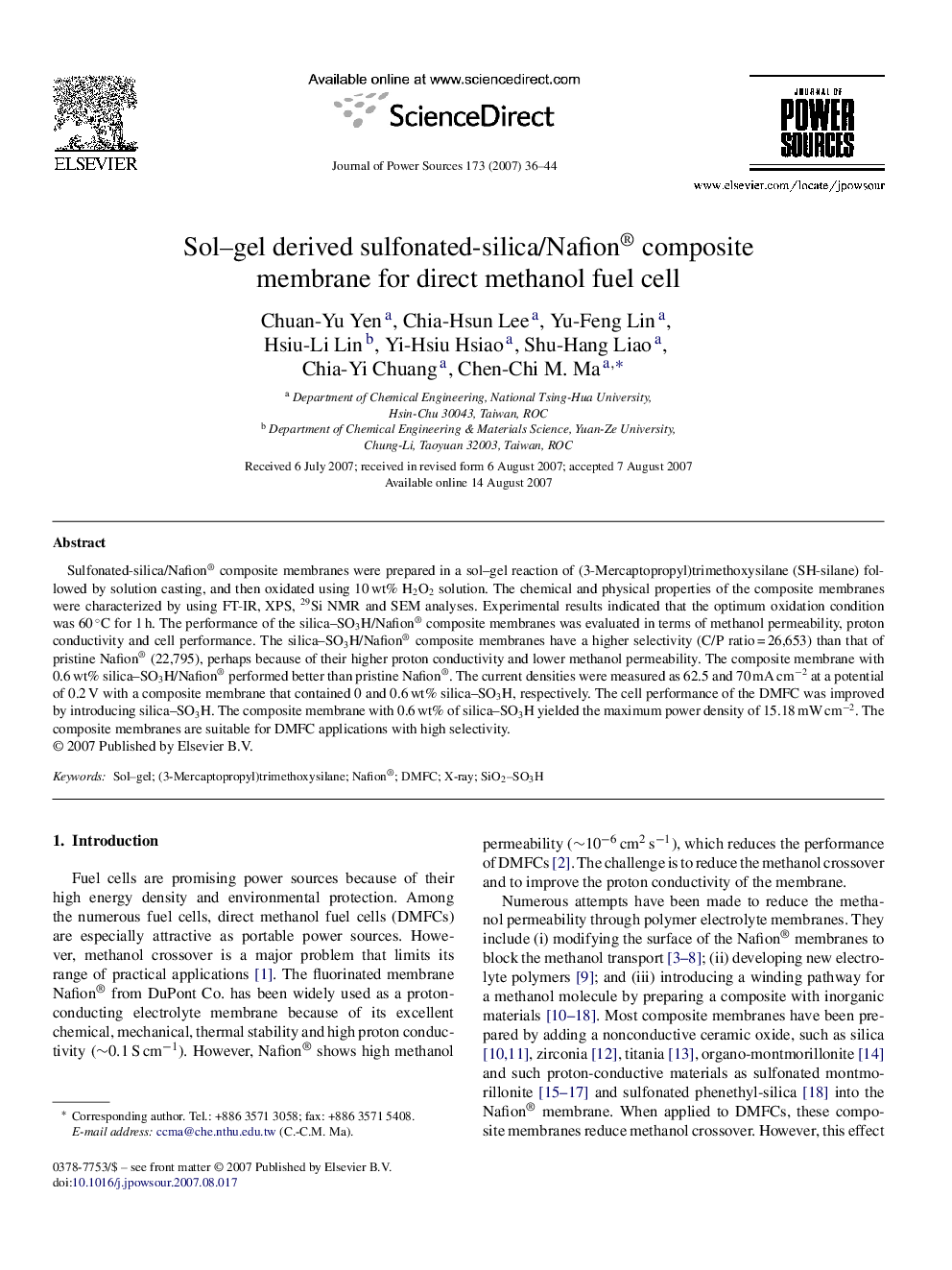| Article ID | Journal | Published Year | Pages | File Type |
|---|---|---|---|---|
| 1294866 | Journal of Power Sources | 2007 | 9 Pages |
Sulfonated-silica/Nafion® composite membranes were prepared in a sol–gel reaction of (3-Mercaptopropyl)trimethoxysilane (SH-silane) followed by solution casting, and then oxidated using 10 wt% H2O2 solution. The chemical and physical properties of the composite membranes were characterized by using FT-IR, XPS, 29Si NMR and SEM analyses. Experimental results indicated that the optimum oxidation condition was 60 °C for 1 h. The performance of the silica–SO3H/Nafion® composite membranes was evaluated in terms of methanol permeability, proton conductivity and cell performance. The silica–SO3H/Nafion® composite membranes have a higher selectivity (C/P ratio = 26,653) than that of pristine Nafion® (22,795), perhaps because of their higher proton conductivity and lower methanol permeability. The composite membrane with 0.6 wt% silica–SO3H/Nafion® performed better than pristine Nafion®. The current densities were measured as 62.5 and 70 mA cm−2 at a potential of 0.2 V with a composite membrane that contained 0 and 0.6 wt% silica–SO3H, respectively. The cell performance of the DMFC was improved by introducing silica–SO3H. The composite membrane with 0.6 wt% of silica–SO3H yielded the maximum power density of 15.18 mW cm−2. The composite membranes are suitable for DMFC applications with high selectivity.
